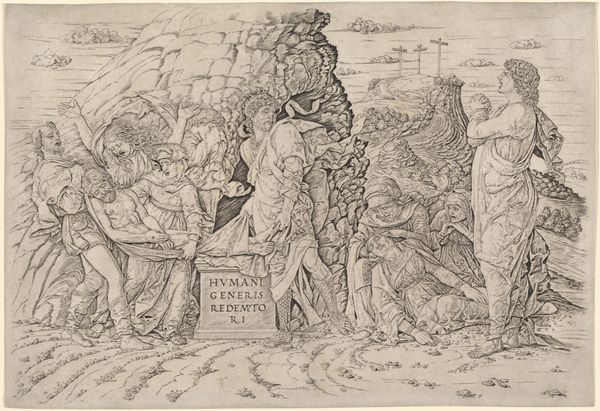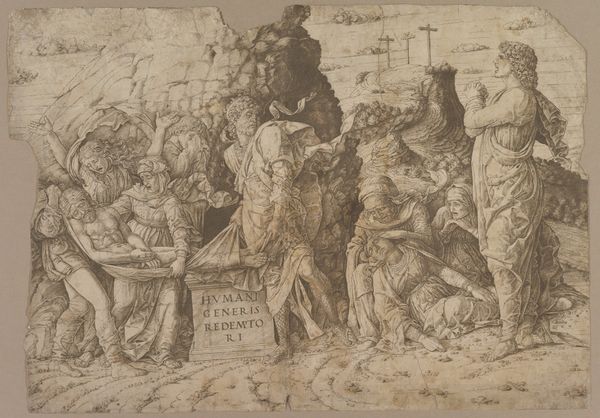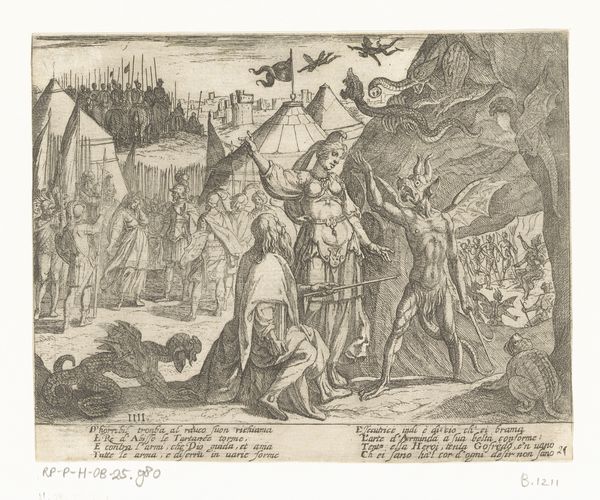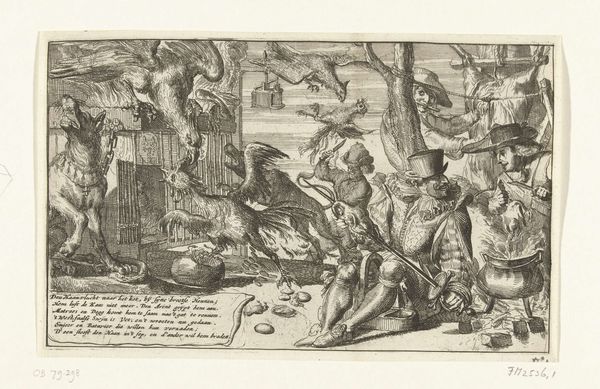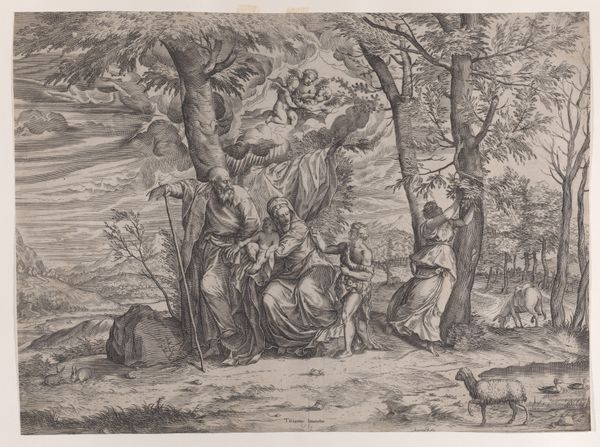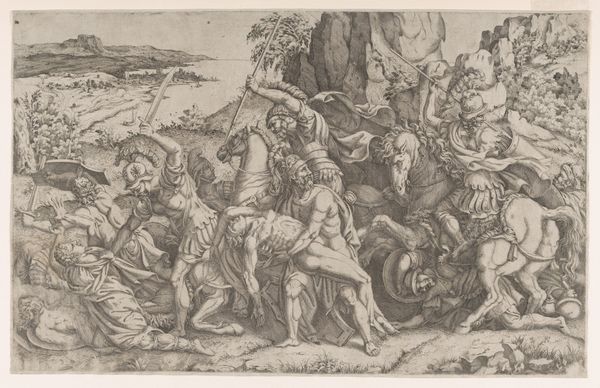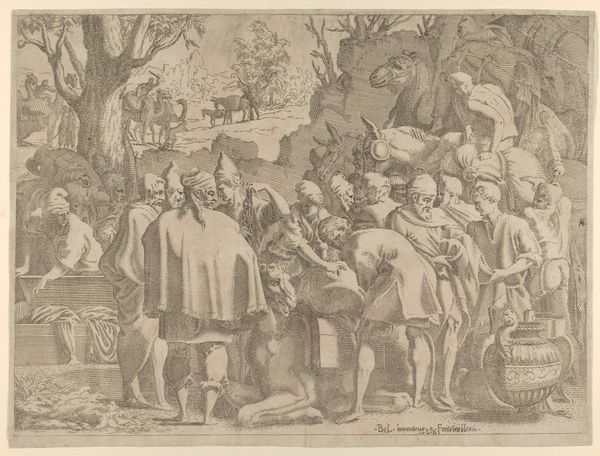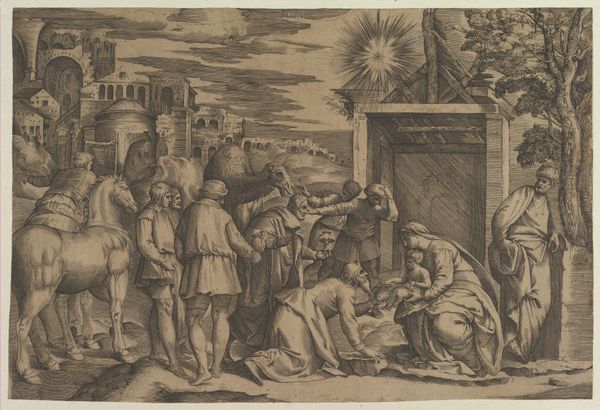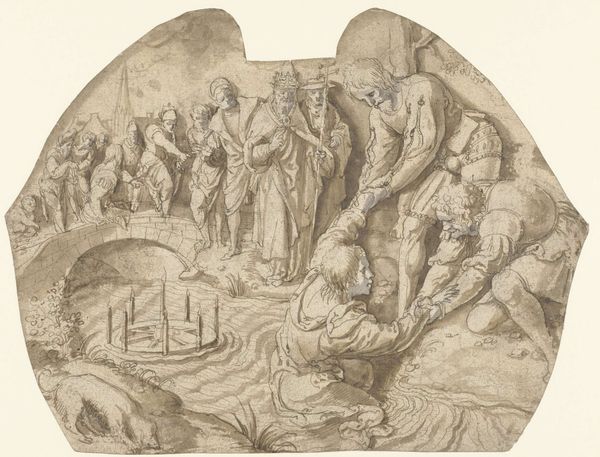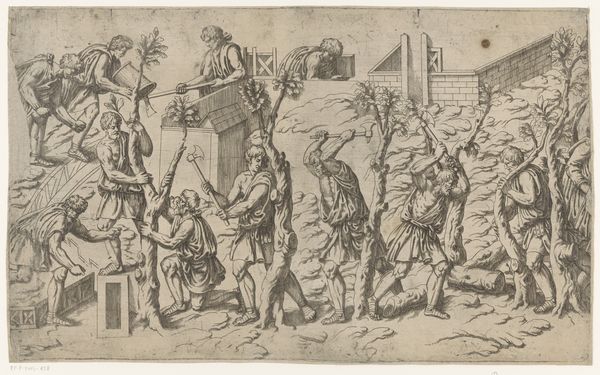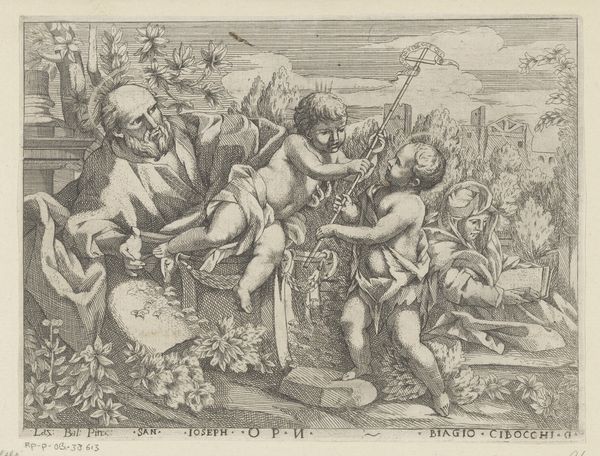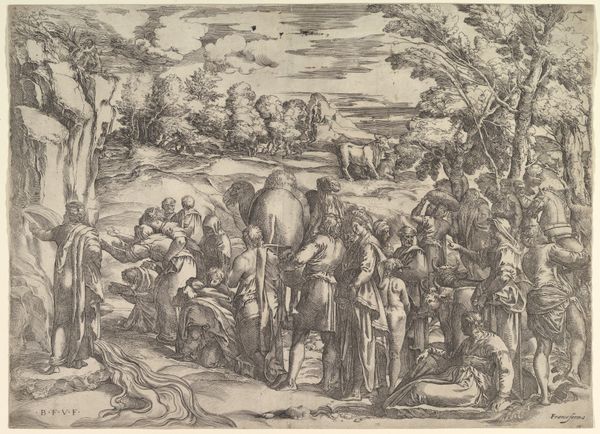
drawing, print, paper, engraving
#
drawing
#
medieval
# print
#
figuration
#
paper
#
history-painting
#
italian-renaissance
#
engraving
Dimensions: 229 × 439 mm (sheet, trimmed within plate)
Copyright: Public Domain
Curator: Andrea Mantegna's engraving, "The Entombment," created between 1465 and 1475, is an iconic piece held here at the Art Institute of Chicago. It depicts the scene of Christ being laid in his tomb. Editor: The somber mood is palpable. Even rendered in these linear, almost brittle lines, you feel the weight of grief bearing down on the figures. The composition, stark and asymmetrical, amplifies that emotional discord. Curator: Mantegna was deeply concerned with accurately portraying classical antiquity. Prints such as these helped disseminate these aesthetic ideals throughout Europe. He and his workshop understood how reproductive engravings could reinforce social ideals of religious sacrifice and mourning, of course, catering to patrons seeking validation of power and prestige through commissioning them for their personal collections, demonstrating erudition. Editor: Note how he uses line—so spare yet incredibly descriptive. The texture of the rocks, the drapery folds...each variation of line weight conveys so much about the materials and emotional states. There's also the striking text, carved directly onto a stone-like pedestal at the center: "HVMANI GENERIS REDEMTO RI," proclaiming Christ the Redeemer. Curator: The inclusion of that Latin inscription highlights a common practice in the era, of artworks commissioned to celebrate and propagate not only faith but erudition in both a local community and international elites. The print had both a function in personal devotion as much as confirming one's educated perspective. Editor: It anchors the scene, doesn't it? Despite its static, monumental form, the inscription pulls the scene toward us, into the present and links us to the figures that display emotions so viscerally raw: loss, despair. See how the figures huddle or gesticulate around this void with minimal cross hatching. Curator: This is where the true skill resides: taking a religious event and providing the framework of Renaissance principles of humanist grief for the modern and historical populations to interpret as needed through shifting socio-political landscapes. Editor: Precisely, Mantegna utilizes linear means, which amplifies rather than diffuses that stark emotionality, creating lasting pathos to a story which the masses, historically, identify. Curator: This piece underscores how even printed images functioned to convey cultural status through art and the performance of one's intellectual piety. Editor: Ultimately, this stark, yet exquisitely detailed engraving exemplifies the enduring power of formal artistic elements to transmit emotional and thematic content.
Comments
No comments
Be the first to comment and join the conversation on the ultimate creative platform.
